By Michele Osherow and Manil Suri
In May 2009, Michele Osherow, an English professor at the University of Maryland-Baltimore County and resident dramaturg at the Folger Theatre, in Washington, invited her colleague Manil Suri, a mathematician at the university, to act as mathematics consultant for the Folger's production of Tom Stoppard's Arcadia. The play explores the relationship between past and present through the characters' intellectual pursuits, poetic and mathematical.That led to a series of "show and tell" sessions explaining the mathematics behind the play both to cast members and audiences. In the fall of 2011, the two professors decided to take their collaboration to the classroom and jointly teach a freshman seminar on "Mathematics and What It Means to be Human." Here is the second of a three-part series on how the experiment played out. Part 1 is here.
Michele Osherow: While Manil astounded the students with mathematical
impossibilities—the trisection of an angle assignment, Zeno's paradox—I focused on the
possibilities that characterized the study of literature. Shakespeare's
King Lear made it easy to note the range of readings inspired by a single work. But not every text we gave to the students was as richly complex as
Lear.
In fact, convoluted might better describe the poetry we introduced next in the classroom from a collection called the
Oulipo Compendium. Oulipo poetry emerged in 1960 when Raymond Queneau and François Le Lionnais gathered a group of writers and mathematicians in France to create literature guided by strict (very strict) and often bizarre constraints. For example, the S+7 (or N+7) constraint requires that every noun in a text be replaced with the seventh noun appearing after it in a dictionary. (You can find more information about Oulipo poetry
here.)
I had never heard the word Oulipo (short for Ouvroir de Litterature Potentielle, or Workshop of Potential Literature) and was surprised when Manil handed me the anthology during our course planning. He qualified the suggestion by saying he had "no idea if it was any good." But I was intrigued: Literature produced through a series of strict constraints was an interesting fusion of our two fields. I wasn't sure, though, if the art was to be found in the language or in the template. I worried that to some students it wouldn't matter.
When I began reading the material I told myself it was probably more compelling in French. Mostly, I thought the Oulipo pieces were sometimes clever, but more often bizarre outcomes of linguistic games. There are some impressive names among the Oulipians (including Italo Calvino), however, and we decided to let the class have at it. I saw it as an opportunity to introduce students to postmodernism, and give them a chance to think and write creatively. Though I dreaded that they would love the stuff.
It felt strange calling the selections we examined "poetry." I couldn't pull much meaning from the works, and neither could the students, which lead to a discussion of the ways in which meaning might be determined by a reader's will. Somehow, though, the more time we spent examining Oulipian patterns, the more compelling I found the game. I liked these poets' sense of humor and their intolerance of pretentious artists and academics alike. Plus, I appreciated their name—the word
potentielle seemed so compelling, and forgiving. Could we brand our class a
seminaire potentiel?
Manil Suri: It had seemed like a plausible item for the syllabus, but delving deeper made me realize just how pseudo-mathematical (not to mention pseudo-literary) Oulipo was. At one point, I asked Michele if it was OK to use the term "mental masturbation" in a humanities class—words I'd never found an appropriate occasion to deploy in 28 years of teaching. She said yes, so I did, to only a stray titter (my math students would probably have been more shocked).
Fortunately, Oulipo did lead to some good dialogue. The fact that the anthology opened with a grandiose manifesto of qualifying rules (surely an unpromising sign for any literary work, even if partially tongue-in-cheek) paved the way to explore the axiomatic foundations of math. One reading was an English translation of the fantastically ambitious (at least in title)
Cent Mille Milliards de Poèmes, or
One Hundred Thousand Billion Poems. It's a set of 10 sonnets, from which new poems can be formed by choosing the first line from the first line of any of the 10 poems, the second line from the second lines of the 10 poems, and so on. The only problem is the new poems don't necessarily make sense.
Our reading led to a discussion of permutations and combinations. That was my cue to point out that each poem in
Cent Mille Milliards de Poèmes could be identified by a unique 14-digit number (specifying the source poem for each line). Given our society's obsession with quantification, I asked the students, would we eventually find a means to reduce all literature this way? The class didn't believe so, at least based on what Oulipo had to offer.
But Michele rose to the movement's defense, striking upon the correct word to capture the link between mathematics and Oulipo: At their core, they were both games. Once we arrived at that insight, the class dove in. The students' creativity blossomed when we told them to come up with their own Oulipian constraint and then create a work based on it. Some formulated their constraints based on an Ipod's shuffling, others on hair braiding, or language overheard in a cafe. One even constructed a poem using the time-signature function of a metronome.
Michele: The students' forced poetic labor with Oulipo inspired them to tackle more challenging works. We examined poems specifically on or referencing mathematical topics, such as Blake's "Tyger," Edna St. Vincent Millay's sonnet on Euclid, Howard Moss's "Particular Beauties."
I found myself jazzed by the poets' playfulness and investigations of mathematical concepts. My colleague? Not so much. It was during a discussion of Moss's poem that I saw an alarmed look sweep Manil's face—a look that erupted into the lamentation, "I'm drowning in a sea of metaphor!" It was the lack of precision, the seemingly endless array of meanings, that frustrated Manil. He was at his most earnest that day and I welcomed it, although I was surprised to hear an accusation of imprecision leveled at poetry, in particular.
But I knew enough by that point to see that the precision to which he was accustomed was different from that found in the humanities. There is precision in poetry—in its crafting and in its comprehension—but interpretations are not limited to a single, most correct reading.
It was easy to concede that Manil was right about one thing: These poets were playing fast and loose with mathematical concepts and were not conveying the full complexity of constructs like Zeno's paradox (in Moss's "Particular Beauties"). But then that wasn't their job, I protested. The task of poets is to use those things available to them in order to share observations about the world.
I think the students liked those days when Manil and I went at it. I liked those moments, too, because I not only had to confront another perspective head on but also had to challenge my own. I loved seeing the baffled expressions of the students while their instructors disagreed; the things we were asking them to consider
were perplexing
and appropriate.
Manil: I like to think I'm cognizant of the precision needed in literary construction, being a writer myself (there—I've played it—my trump card of having dabbled in different disciplines; the academic equivalent of the sensitive male).
But yes, I found it difficult to sit still as meticulous mathematical principles were divested of their integrity in the service of poetic cleverness. Mathematics is so poorly understood as it is, by poets and readers alike. To further confuse its meaning in swirls of willful metaphor seemed a dubious pursuit. (I suppose I must have come off as a grumpy party-pooper—probably still do.)
As for more general accusations, I wasn't knowledgeable enough about the humanities' goals and methodologies to make a comparison with those of mathematics. Perhaps there'd be a chance later for a no-holds-barred thrashing out. Which would be invigorating and instructive, even with odds against me of 14-to-1.
But onward with our story. Freshly spewed out by the sea of metaphor, I led the class to hopefully firmer ground: a field trip to Baltimore's Walters Art Museum for a perfectly timed exhibition on a recently rediscovered palimpsest that recorded several discoveries by Archimedes (including an understanding of infinity and aspects of calculus).
The poster for the exhibition, "Lost and Found: The Secrets of Archimedes," showed much mathematical promise: geometrical figures floating in space seemed to be the clear stars of the show. Except the exhibit turned out to be mostly about the conservation techniques used to decipher this and other manuscripts.
While Michele lingered lovingly over each panel, I gnashed my teeth in bitterness (but discreetly, so as not to alarm the students). Mathematics was a clear afterthought, relegated to some modest exhibits in the final gallery. Another opportunity to make the subject come alive was lost.
The New York Times reviewer complained about this, as did (a bright spot!) some of our freshmen.
Toward the end of the visit, though, was a sight to warm the cockles of even the coldest mathematician heart. On a low-set table was Archimedes' famous "Stomachion" jigsaw, where visitors were invited to assemble 14 irregular pieces of colored felt into a square (something that could be done in 17,152 different ways). Students from our class were trying to solve the puzzle jointly with math majors we had invited along. Michele and I watched the collaborative effort as proudly as doting parents. Maybe there was hope, maybe the twain could meet after all.
Michele: We carried that hope into the final unit for the course, one devoted both to fractals and to the Tom Stoppard play,
Arcadia, that first caused me to seek out Manil as a mathematics consultant for the Folger production.
I felt optimistic about the upcoming lessons: This was, after all, the text that prompted my collaboration with my unlikely (I nearly wrote unlucky) co-instructor. I hoped the students would be as fired up as we were by Stoppard's smarts, and by the connections he makes between mathematics and literature. I hoped they would appreciate the layering of time, ideas, and relationships; I hoped they'd dispute the penicillin versus poetry binary.
It was easy for me to forget, blinded by love, that
Arcadia is a difficult read, especially for freshmen who hadn't been exposed previously to a staging of the play, or to Stoppard (true genius, but dense reading). They needed more hand-holding with the play than they did with
Lear; they were confused by the shifting time periods and even by the humor. There was much historical and ideological ground to cover—the transition from Enlightened to Romantic thought, the role of knowledge and landscape. They didn't understand iterated algorithms or the play's ending. We needed another semester.
But we also needed closure. It was that time when the students were expected to see the connections we'd been hunting throughout the term. I took them back to where we had started, the search for patterns, and we went through the play looking for patterns of thought, situation, and language. The students could do that well but also had a good eye for the differences among the repeated patterns.
"Right!" I said, "Does that mean they're 'iterated?' Is the play a kind of literary fractal?"
Manil: And there we have it, a question that crystallizes the conflicts in this course—and perhaps in the interaction of art and mathematics in general. A fractal is a precise mathematical entity, one with infinite levels of self-similarity, and moreover, possessing a fractional dimension (e.g., neither a one-dimensional line nor a two-dimensional patch, but something cloudlike that lives in between).
Mathematical training insists such definitions be rigorously observed. If they're not, everything that follows can collapse like a house of cards. Clearly, such an attitude would be downright Talibanistic for a course like this one. And yet, to make analogies, to bandy about technical terms, or to employ them in art, one needs to achieve a certain level of understanding first.
Which, alas, does not come easy. Bringing the class to a point where they could discuss the play in terms of fractals had taken work. It was a definite accomplishment (fortunately, we could use the
animations I had prepared for the Folger production of the play).
Did the students have more than a hazy idea of fractional dimension? Of course not. And neither would most math majors without a course on the topic. But we fortunately didn't need to go that deep, just like my understanding about Romantic versus Classicist garden design in Stoppard's play (something I'm still indignant at him for expecting me to be familiar with) remains cursory. What
Arcadia does is invite you to expand your horizons, offering tantalizing glimpses of interlinked worlds waiting to be explored. The extent to which you journey into them, the work you put in, the connections you forge with what is familiar to you, have to be your own. In hindsight, that was perhaps the main message of our course.
The last thing we did with
Arcadia was read aloud an excerpt from it—the diatribe that Bernard, the literary don, aims at the mathematician Valentine: "Oh, you're going to zap me with penicillin and pesticides. Spare me that and I'll spare you the bomb and aerosols. But don't confuse progress with perfectibility. A great poet is always timely. A great philosopher is an urgent need."
It was the perfect juncture to loop back to C.P. Snow, whose famous "Two Cultures" essay about the divide in Western intellectual thought between the sciences and the humanities we had discussed at the beginning of the course. The class still saw the divide, still saw the long road ahead.
But perhaps the students were more optimistic than Snow (or Bernard). They'd now glimpsed the future: the digitalization of the humanities, the emphasis on statistical and quantified evidence, the interconnectedness of human experience. The next phase, their individual projects, would reveal whether the corner had been turned.
Next week: The students strike back!
Michele Osherow is an associate professor of English at the University of Maryland-Baltimore County, and resident dramaturg for the Folger Theatre in Washington. Manil Suri is a professor of mathematics and statistics at the university, and author of the novels "The Death of Vishnu" and "The Age of Shiva." His forthcoming novel is "The City of Devi."




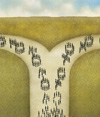








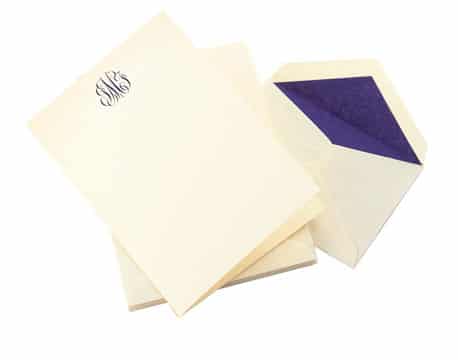

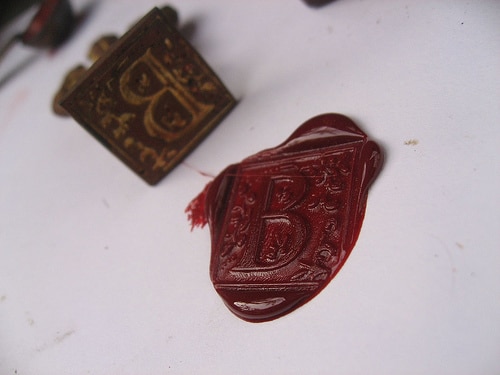

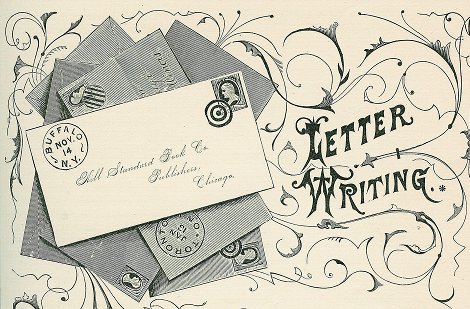
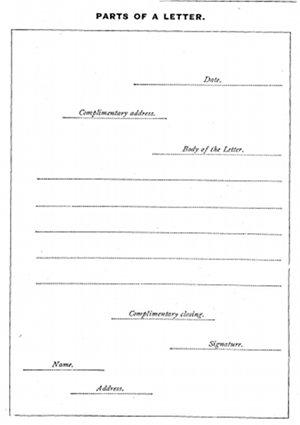
 The Art of Letter Writing: Stationery
The Art of Letter Writing: Stationery The Art of Letter Writing: The Sympathy Note
The Art of Letter Writing: The Sympathy Note 30 Days to a Better Man Day 14: Write a Letter to Your Father
30 Days to a Better Man Day 14: Write a Letter to Your Father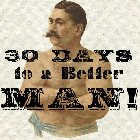 30 Days to a Better Man Day 28: Write a Love Letter
30 Days to a Better Man Day 28: Write a Love Letter